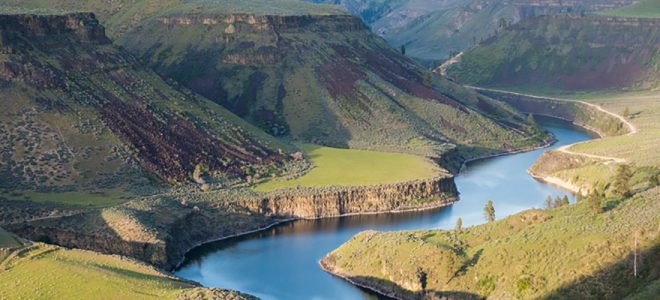
Introducing the Treasure Valley Water Atlas
It may come as a surprise to many of us living in the Treasure Valley to learn just how much water we have. Unlike some of the water shortages experienced by other Western states, and even other parts of Idaho, we currently meet most of our needs. We are able to balance multiple water uses including agriculture, urban development, recreation, and river health.
But that may change. The Treasure Valley is facing challenges that will affect our water availability and how we use it. With the population of the Treasure Valley expected to surpass 1 million inhabitants by the middle of this century, and with climate altering both our water needs and the amount of water we have available to us, water use in the Treasure Valley is bound to look very different in the coming years.
That’s exactly why researchers at Boise State have been studying the Boise River Basin for the past five years. They have compiled their findings into the Treasure Valley Water Atlas, a website with a collection of narratives that explores and describes one of our most important natural resources: the Boise River.
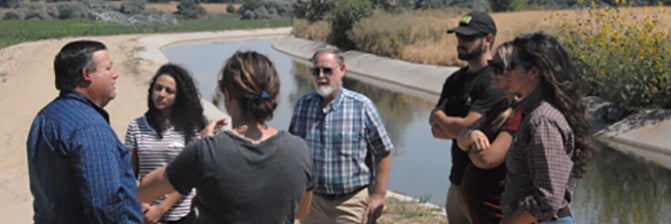
FIVE YEARS OF RESEARCH
Thanks to a National Science Foundation grant, researchers from universities across the state have been able to spend the last five years studying water resources, climate change, and the impacts of population growth on Idaho’s mid-size cities. At the beginning, project scientists were focused on creating an ambitious model that would integrate population growth, land use change, climate change, and hydrologic data in order to predict what the future might look like.
The Treasure Valley Water Atlas will be officially launched at the Idaho Water Conference at Boise State on April 17.
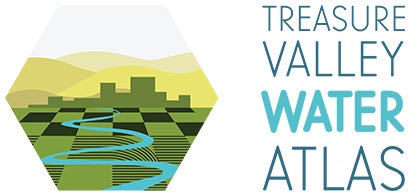
But scientists soon realized that designing the model without water users, managers, and other decision-makers in mind would only meet some of the project’s goals, which included meaningfully engaging stakeholders. As a result, an interdisciplinary group of scholars led by Drs. Shawn Benner and Jen Schneider—including undergraduate students, graduate students, postdoctoral researchers, and faculty researchers—began a years-long stakeholder characterization and engagement effort in the basin. Stakeholder characterization involves identifying those who have a literal or metaphorical “stake” in the system—those who make decisions about the system or who are affected by decisions others make. It can also involve identifying who has influence in the system and who is excluded from decision-making or deliberation processes.
Stakeholder engagement, the next step, involves working with stakeholders to identify key problems or areas of concern that scientific research might help address. In our project, we undertook public meetings, focus groups, and one-on-one interviews with federal and state agencies, Treasure Valley city and irrigation district officials, farmers, non-profit leaders, and others in order to learn as much about the competing interests and concerns in the valley as we could. These groups and individuals identified key topics such as population growth, urban/suburban development, farmland loss, conflicts with water managers (including legal challenges), and both market-based and climate-based changes.
This phase of the research also identified an important feature of the system, which is that different groups of stakeholders had no meaningful mechanism for communicating with one another, outside of operations and maintenance or the courts. Furthermore, there were widely differing views about how the system works, about what data is available about the system (and what it means), and about what steps should be taken in the face of impending challenges such as explosive population growth.
The team also had a fateful meeting with staff working for an Idaho member of Congress. Those staff members explicitly stated that they wished they had a series of online narratives, accessible to the public but still data-rich, that could be shared with constituents who had questions and concerns about water. Following that conversation, and drawing from our biophysical and social data gathering, our team decided to use the ESRI StoryMap platform to develop the Treasure Valley Water Atlas (TVWA).
What makes the Treasure Valley Water Atlas different from other water atlases is not only the stakeholder engagement that took place throughout its development process, but also the way it integrates interdisciplinary approaches and data in a publicly accessible and readable format. Since the central problems identified by stakeholders are not just biophysical but also social and political, a research team skilled in hydrology, land-use modeling, environmental sciences, public policy, and science communication was assembled to bring all the different pieces together during all phases of the research, from design to implementation. Our goal was to create a resource that would be useful to citizens with little to no knowledge of the system, but that was also data-rich, for those with more knowledge and experience but with particular data needs.
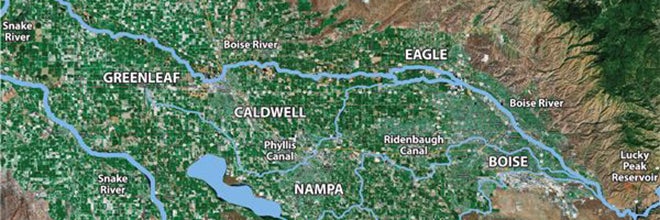
THE TREASURE VALLEY WATER ATLAS
The Treasure Valley Water Atlas covers several different topics. Parts of the atlas focus on the basics of how the water system works from a biophysical perspective. Other pieces focus on clarifying the management and communication practices between federal, state, and local agencies. The Atlas’s last narrative, “What Does the Future Hold?,” concludes by focusing on the future challenges and opportunities policy-makers and water managers will have to face as we experience intense population growth and changes to the climate moving forward. We describe some of those challenges in the section below.
The Future of Water in the Treasure Valley
“What Does the Future Hold?” considers scenarios that are informed by both biophysical research as well as focus group and interview research. Here, the Atlas explores the possibility of a future where our water supply, and the way we use water, may be dramatically different, and focuses on four main challenges we are likely to face in the coming years.
- Population growth. Treasure Valley cities are growing rapidly, which will dramatically increase our domestic water needs. With populations projected to reach 1.75 million by 2100, the demand for municipal water supplies will increase significantly. How we grow also matters. With population growth comes development, and the character of urban growth will influence water use; lower density development with larger lots will require more water. If we handle growth by adding larger lots, we will need about twice as much water as would be needed if we grow with smaller, higher-density lot sizes. This means that decisions we make (or don’t make) now about how urban growth occurs will strongly influence how much water we will need in the future.
- Climate change. Climate modeling at the local level is fraught with uncertainties, including the challenges of predicting human behavior. That said, some scenarios suggest that climate change may increase our water needs by up to 30%, depending on temperature variability. Perhaps equally important, shifts in climate are likely to change when snow will melt and when runoff will be available. For example, we are observing a trend on the Boise River where peak stream runoff is now approximately 2 weeks earlier than historical averages. Projections of future streamflow predict both declines in summertime flow levels and shifts in the timing of summertime runoff that may result in streamflow peaks shifting months earlier than they are currently. This has potential implications for irrigation in the Treasure Valley.
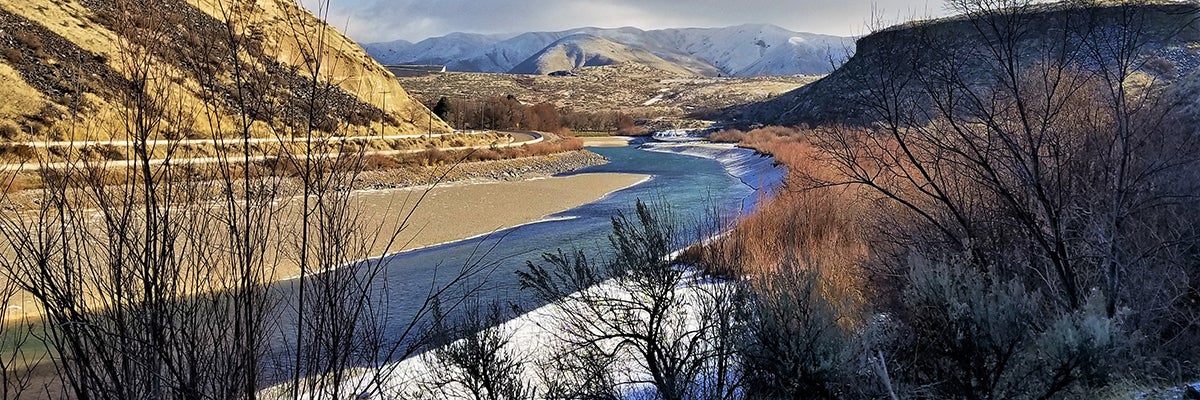
Shifting winter precipitation from snow to rain and earlier snowmelt runoff may increase the likelihood as well as the intensity of flooding. It is possible that this will pose a significant challenge to agencies managing our reservoirs for flood control and storage. Earlier runoff timing prematurely fills the reservoir network, resulting in increased water released for flood management. This released water goes unutilized by water users, as agriculture is not typically active this early in the year, which further complicates water right fulfillment later in the season.
- The inefficiency paradox. As time passes, farmers and cities are moving towards increasing the efficiency of water use and delivery. This has many positive implications, but also has drawbacks that are specific to the Treasure Valley. As delivery and use of surface irrigation water becomes more efficient, groundwater supplies may be negatively affected. At this time, we only consume about 1/3 of the water we divert from the river. The other 2/3 infiltrates back into the aquifer through flood irrigation, unlined canals, and the over-watering of lawns. The excess water that infiltrates back into the aquifer recharges it, which is a good thing considering the majority of the drinking water in the Treasure Valley comes from treated ground water. As long-term changes to increase efficiency occur, such as canal lining and shifts in irrigation practices, we may see less water infiltrate back into the aquifer. This could potentially affect the reliability of our municipal drinking water source, especially as more people come to the Treasure Valley.
- The water management system. Our water storage, delivery, and management system—originally designed to support agriculture–may have trouble supporting an urbanized Valley. If the Treasure Valley is to move towards a more urban future and away from a primarily agricultural base, it may mean that the management system will have to change with it. From an infrastructure perspective, this means as more farmland is developed into subdivisions, the current system is transitioning from an open ditch/canal system to a pressurized (piped) system.
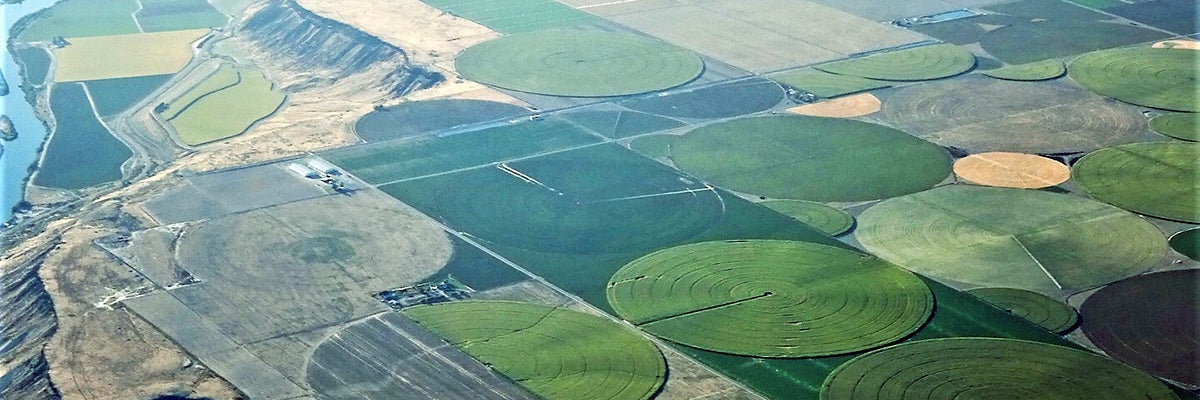
From a management perspective, this means stakeholders who traditionally have not had large roles in system participation, such as cities and environmental groups, will need stronger voices to participate in the planning of how we manage water in the future. The Treasure Valley may want to look to other areas that are having success with coordinated water management systems, such as Denver and Las Vegas. Agencies that are not mandated to work together might need to come to the same table and discuss water use. For example, municipalities might need to work more closely with irrigation districts and canal companies to determine how current infrastructure can be built upon or adapted for outdoor domestic use.
Finally, as we move into an urban-centric management and accounting system, the way water rights are used may need to be reevaluated in order to provide the flexibility of moving surplus water to where it is most needed. Currently, water rights almost always stay attached to the land and designated use, so even if water is saved through conservation, it cannot necessarily be used for anything other than irrigation.
MOVING FORWARD
As the Treasure Valley sits at the cusp of change, our abundant water supplies place us in a unique position compared to most cities in the west. Depending on what decisions we make now about how we manage our water resources, there are different potential futures. We may have a lot of water now, but the challenge is in how we decide to move it to where it is needed in the future, both legally and physically, without significant negative impacts to all those who use the Boise River in some way. Based on the research we have conducted, we have three main recommendations going forward:
- Advance discussions that promote a shared, systems-level understanding of our current and future water resources and associated needs,
- Encourage engagement and participation in that discussion from the diverse stakeholders that have a stake in both current and future water resources in the Treasure Valley,
- Develop targeted efforts to better collectively understand and constrain elements of the current and future water resource system that will inform our decision making.
To view the Treasure Valley Water Atlas, please visit: cid.boisestate.edu/tvwa

 Jillian Moroney is a postdoctoral fellow at Boise State University. She enjoys working at the interface between society and natural resources. Her areas of research and expertise include social assessment and stakeholder engagement regarding natural resource related topics including bioenergy, forestry, irrigation, and farmland. She earned her Ph.D. in environmental science and her M.A. in bioregional planning and community design, both from University of Idaho, and her B.A. in geology from Western Washington University.
Jillian Moroney is a postdoctoral fellow at Boise State University. She enjoys working at the interface between society and natural resources. Her areas of research and expertise include social assessment and stakeholder engagement regarding natural resource related topics including bioenergy, forestry, irrigation, and farmland. She earned her Ph.D. in environmental science and her M.A. in bioregional planning and community design, both from University of Idaho, and her B.A. in geology from Western Washington University. Christopher Torres is a Doctoral student in the Public Policy and Administration program in the School of Public Service.
Christopher Torres is a Doctoral student in the Public Policy and Administration program in the School of Public Service. Curtis Crandall is a graduate student at Boise State University in the M.S. of Hydrologic Sciences program. He also holds a B.S. in Geoscience with an emphasis on Hydrology from Boise State University. His primary field of research is modeling evapotranspiration using remote sensing, GIS, and METRIC. He also works as a Boise State University research assistant for the Treasure Valley Water Atlas and EPSCoR.
Curtis Crandall is a graduate student at Boise State University in the M.S. of Hydrologic Sciences program. He also holds a B.S. in Geoscience with an emphasis on Hydrology from Boise State University. His primary field of research is modeling evapotranspiration using remote sensing, GIS, and METRIC. He also works as a Boise State University research assistant for the Treasure Valley Water Atlas and EPSCoR.